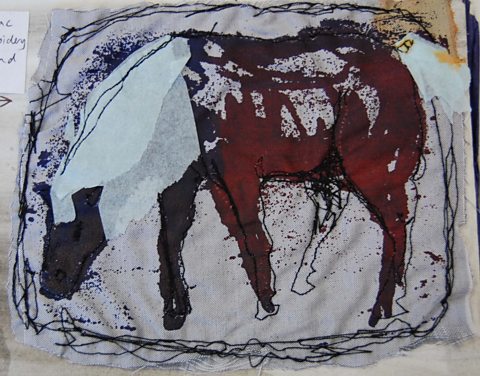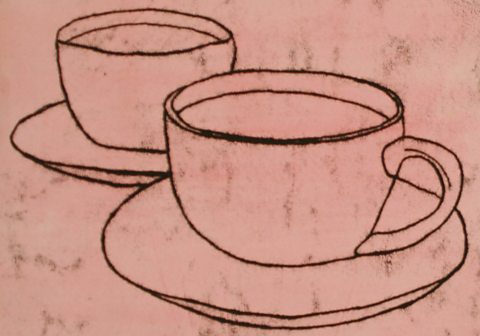Monoprinting
Monoprinting

Monoprinting is the process of making a print using mark making. It is a good technique for creating spontaneous and expressive print work.
Water-based ink is used for monoprints. A roller applies the ink evenly over a printing sheet. This is usually an acrylicA paint or ink made from a mix of pigment and a fast-drying liquid plastic sheet.
Monoprinting methods
There are two methods to create a monoprint.
Additive
Draw patterns, shapes and designs directly into an inked surface, usually an acrylic sheet. Gently lay a piece of paper on top of the inked surface to pick up the design.
Subtractive
Apply the paper, face down, directly to the inked acrylic surface and draw out the design on the back of the piece of paper. The pressure will lift ink from the acrylic sheet to leave an image.
Uses of monoprinting

Monoprinting is mainly used for fine art prints and textiles work.
It is used for single prints or small batches. Only a limited number of prints can be created this way as each print removes a layer of ink from the acrylic sheet.
Monoprints are usually limited to one colour. Try layering multiple monoprints on the same piece of fabric or paper.
- Always make sure the printing sheet is dry before applying water-based ink. If the sheet is wet the ink will water down and the print will not be âcrispâ.
- If the monoprint is too dark and the detail isnât visible, too much ink has been applied to the acrylic sheet. Blot off the ink using a piece of paper.
- The printed image will be a mirrored version of the plate, so write letters or words backwards when mark making.